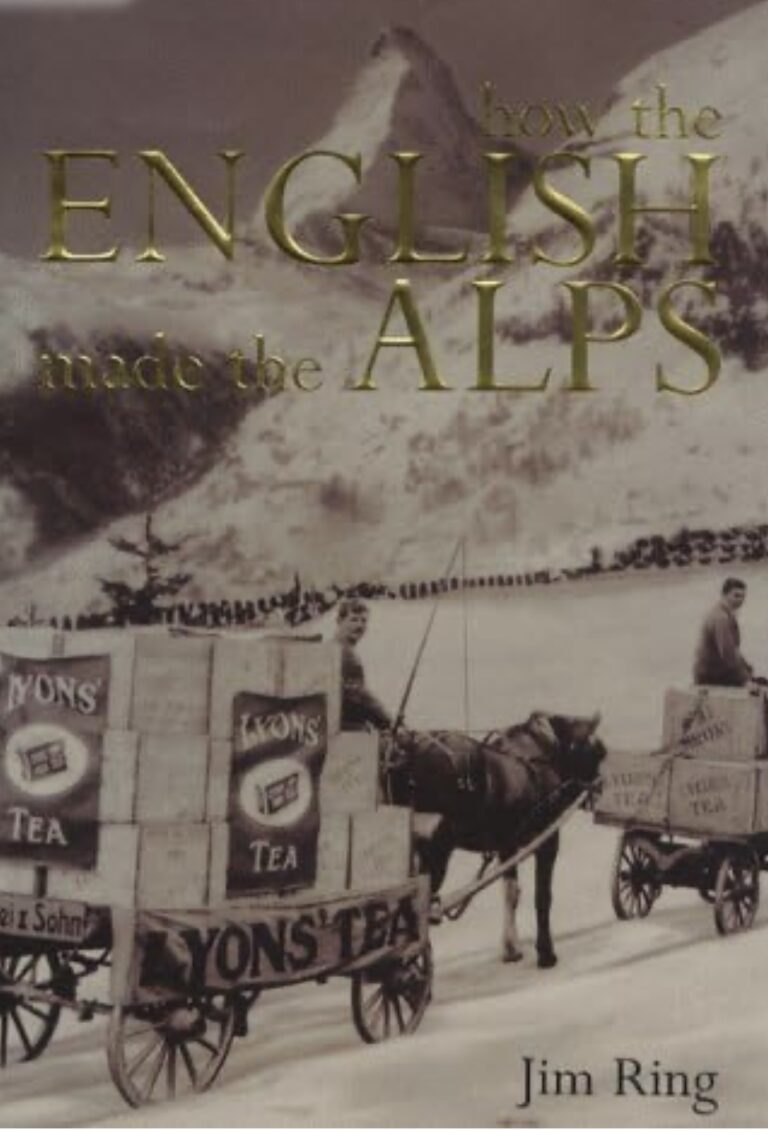It is fitting that this book is published by John Murray; it was an ancestor of the present John Murray, by the same name, who wrote the first popular handbook to the Alps in 1838. That John Murray was himself the son of the famous John Murray who made his name by publishing the poetry of Lord Byron. And it was Byron who, more than any other poet except Wordsworth, introduced the Alps to the general public as somewhere to be visited and viewed.
Byron found—or said he found—in the grandeur and solitude of the Alps something that echoed with his soul. Shelley was also extravagantly moved: “The immensity of these aerial summits excited, when they suddenly burst upon sight, a sentiment of ecstatic wonder, not unallied to madness.” At the turn of the 19th century the civilised response to the Alps was changing. Before, they had been viewed with horror or distaste (the essayist Joseph Addison referred primly to “this most mis-shapen scenery”)—an untidy inconvenience. Now, they became, in the words of Mark Twain, “the visible throne of God”.
Rousseau propagandised the moral lessons to be learnt from the Alpine peasants, the Romantics found in the hills a mirror of God or their own personalities, and a Dr Spengler announced the mountain climate to be the best cure or palliative for tuberculosis, then responsible in England for one death in six. A spiritual cure, inspirational scenery or a sanatorium. Thanks to the industrial revolution, the English more than any other nation had a reason to get away, and the money to do so. Soon the Alps were swarming with them.
Jim Ring tells the story of how the English adopted the resorts, scaled the virgin peaks and popularised winter sports in the 19th and early 20th centuries. It had not occurred to the locals to travel higher than was necessary for herding, hunting chamois or smuggling. One of the recurring questions posed by this book is what possessed the English to want to get to the top of those treacherous hills. Science was the excuse: until then, little had been known about the flora, fauna, meteorology and glaciology of the upper reaches.
But Ring identifies a more schoolboyish impulse at the heart of the expeditions: it was the natural extension of the stegophilic enterprises pursued by the likes of Geoffrey Winthrop Young and TE Lawrence over the college roofs of Cambridge and Oxford. When Dickens pronounced that the famous Alpine Club had “contributed as much to the advancement of science as would a club of young gentlemen who should undertake to bestride all the weathercocks of all the cathedral spires of the United Kingdom”, he was closer to the truth than he knew. There is no better (or worse) explanation than that given by George Leigh Mallory to the journalist who asked why he wanted to climb Everest: “Because it’s there.”
Everyone will have their least favourite chapters. “White Leprosy” tediously details the commercialisation of the more attractive resorts as a consequence of the missionary zeal of, for example, the baptist Thomas Cook. But it is balanced, and the book bracketed, by hair-raising accounts of the tragedies on the Matterhorn in 1865 and Everest in 1924. Mallory and his climbing partner Andrew Irvine are described as “the epitome of English alpinism”; in truth, they are dragged in to provide popular appeal and a poignant ending. We learn, for instance, that when, in 1999, Mallory’s body was found somewhere below the point of Everest’s north-east ridge, with it were a tin of Brand’s Savoury Meat Lozenges, a pair of sun goggles, a penknife, a box of Swan Vesta matches, nail scissors in a leather case, and a handkerchief monogrammed “GLM”.
Ring does well in bringing together the disparate strands of the tale into something resembling a coherent narrative. He manages to incorporate an account of the development of trains which could manage the steep gradients to the most fashionable resorts, and also shows how the Alpine Club’s stuffy disapproval of “artificial aids” to climbing (crampons, supplementary oxygen) left them, and consequently the English, behind in the race to accomplish the more difficult routes up the main peaks. And he traces the development of the various winter sports, from the tobogganing initiated by the effete littérateur John Addington Symonds to early experiments in the Scandinavian practice of ski-running or skeeing, sometimes known as skiing.
It is a shame that he does not include footnotes. It would have been nice to know where, or to whom, Arthur Conan Doyle rather loftily (and with only partial truth) wrote: “In the early months of 1895 I developed ski-running in Switzerland.” Ring might also have included a page on the invention of snowboarding. But these are merely quibbles about a comprehensive, well-written account of a fascinating subject.

